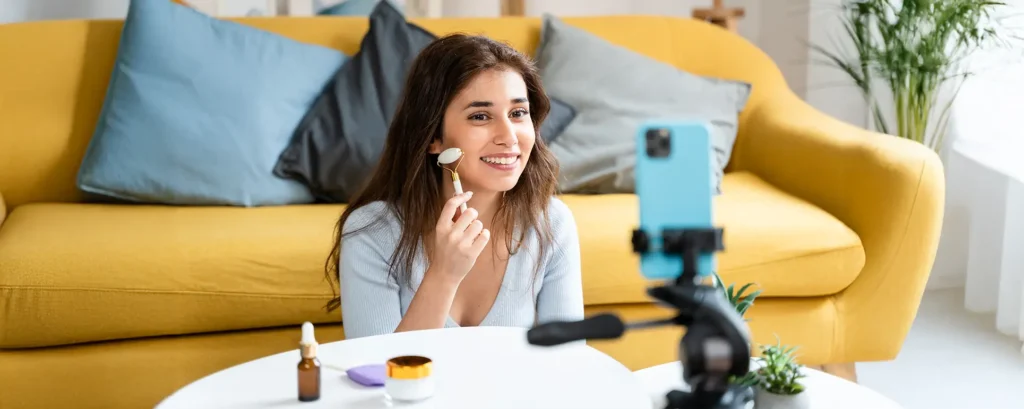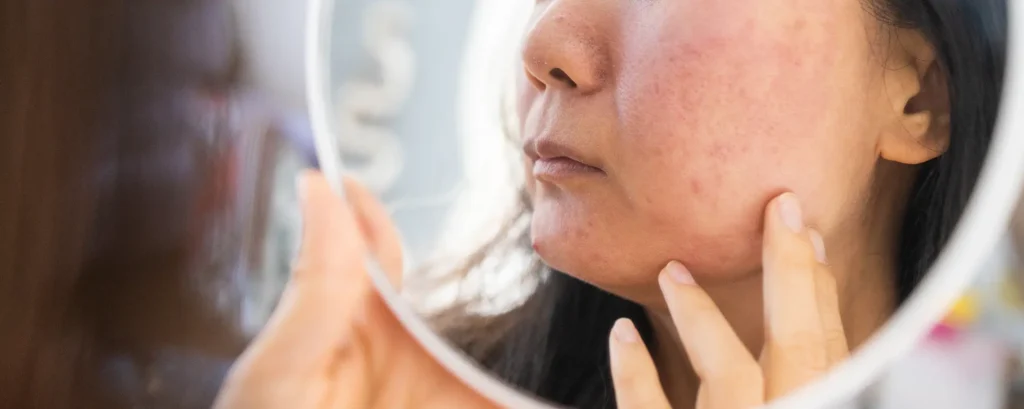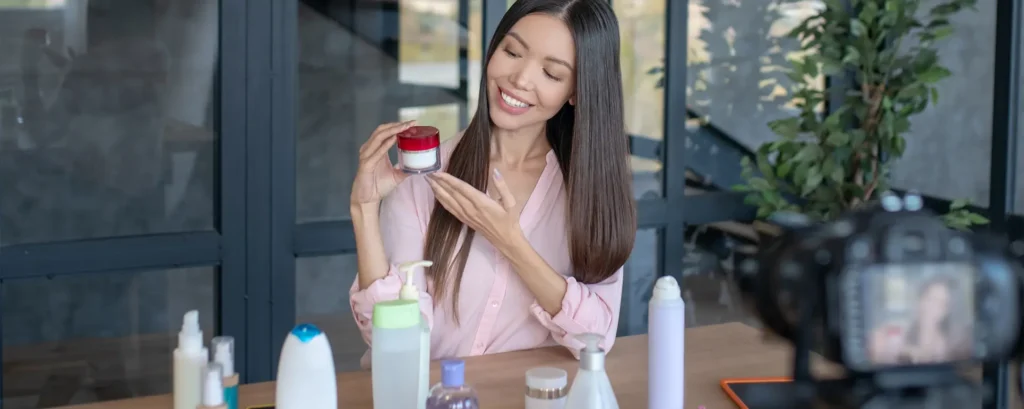TikTok has taken the social media world by storm, captivating millions with its short-form videos on everything from dance challenges to beauty routines. One of the most popular categories on the platform is skincare where users, especially influencers and content creators, share their personal routines, product reviews, and homemade remedies with massive audiences. Many of these videos go viral, sparking global interest in trendy skincare hacks that promise fast results using everyday ingredients or over-the-counter products.
But here’s the catch: not everything that trends on TikTok is backed by science or safe for your skin.
From using toothpaste as a spot treatment to applying lemon juice for brightening, TikTok is filled with DIY skincare tricks that may look harmless or even appealing. Some of them do work, particularly when they align with dermatologist-approved practices. However, many others can lead to irritation, allergic reactions, or long-term skin damage if misused or misunderstood. What works for one person may not work for another, and the short, edited nature of TikTok videos rarely offers the full picture.
This is where expert guidance becomes crucial. In this article, we’ll explore how dermatologists assess the safety and effectiveness of TikTok skincare trends. We’ll also discuss the common risks of trying viral skincare without proper knowledge, and how you can better protect your skin by recognising red flags and relying on evidence-based skincare practices.
Whether you’re curious about slugging, face icing, or using food items as face masks, this guide will help you separate skincare fact from fiction so you can make informed choices that support your skin’s long-term health.
The Rise of Skincare Trends on TikTok
TikTok’s explosive popularity has transformed it into more than just a platform for dance challenges and lip-sync videos it’s now a major source of beauty advice, particularly in the realm of skincare. With its algorithm designed to push engaging content to wide audiences, even lesser-known creators can quickly go viral if their tips resonate with viewers. As a result, skincare trends can spread like wildfire, often reaching millions within hours.
Beauty influencers and skincare enthusiasts frequently post their routines, product hauls, before-and-after transformations, and tutorials using trending hashtags like #skincareroutine or #skincarehacks. These videos are typically short, visually appealing, and often framed as quick fixes making them easy to consume and tempting to try. Some creators even combine entertainment with skincare advice, creating content that feels both educational and relatable.
Among the most widely shared trends are DIY treatments using ingredients found at home. Examples include applying toothpaste to shrink pimples, using lemon juice to brighten dark spots, or rubbing raw garlic on breakouts. These kinds of “remedies” often gain traction because they appear cost-effective, natural, and immediately accessible. In many cases, users post dramatic “results” or testimonials that make the treatment look convincing.
But here’s the problem: just because a trend is popular doesn’t mean it’s safe or suitable for your skin.
While a few trends might align with sound dermatological advice, many do not. The danger lies in the lack of scientific evidence supporting these methods. Many influencers promoting these skincare hacks aren’t licensed professionals, and their skin type, age, underlying conditions, or product history are rarely disclosed. What’s more, viewers often skip the research and jump straight into trying the trend, unaware of the potential risks involved.
Another concern is the one-size-fits-all message these videos often convey. What works wonders for one person’s oily or resilient skin could spell disaster for someone else with sensitive, dry, or acne-prone skin. Without knowing your skin’s specific needs or the full story behind a trending product or ingredient you could end up aggravating your skin rather than helping it.
In the following sections, we’ll take a closer look at how dermatologists view these TikTok skincare trends, which ones might be worth exploring, and which ones are best avoided entirely.
How Dermatologists Evaluate TikTok Skincare Trends

When it comes to maintaining healthy, radiant skin, dermatologists are the most reliable source of information. Their training is rooted in medical science, giving them a deep understanding of how the skin functions and how it responds to various treatments. So, when a new skincare trend pops up on TikTok and begins gaining traction, dermatologists don’t just take it at face value. Instead, they apply a careful, evidence-based approach to determine whether it’s genuinely helpful or potentially harmful.
Dermatologists typically assess skincare trends using several key criteria, including:
1. Ingredient Safety and Formulation
One of the first things dermatologists look at is the safety of the ingredients being promoted. Many TikTok skincare hacks involve the use of unconventional or unregulated substances some of which can be far too harsh for regular use on the skin. For example, trends that recommend using raw lemon juice, baking soda, or even glue as part of a skincare routine can disrupt the skin’s natural barrier, cause chemical burns, or lead to increased sensitivity over time.
Dermatologists consider factors like pH balance, concentration of active ingredients, and whether an ingredient is meant to be left on the skin. Even ingredients that are generally safe can become problematic if misused or over-applied. For people with underlying skin conditions like eczema, rosacea, or acne, certain ingredients promoted in viral videos can trigger flare-ups or worsen their symptoms.
2. Scientific Evidence and Clinical Backing
Unlike social media influencers who often rely on anecdotal results or personal experience, dermatologists turn to clinical studies and peer-reviewed research to guide their recommendations. This means they don’t support a trend just because it appears to work for a few people online. If a treatment lacks scientific backing or contradicts well-established dermatological principles, experts are likely to advise against it.
Trends such as applying sunscreen once a day regardless of sun exposure, or using untested combinations of active ingredients, often fall short under scientific scrutiny. Without evidence from controlled studies, these trends can’t be considered safe or effective on a broader scale.
3. Personalisation and Skin Type Considerations
Another major concern dermatologists have with TikTok skincare trends is their one-size-fits-all presentation. The reality is that skincare is highly individual. Factors like skin type (oily, dry, combination, sensitive), tone, age, lifestyle, and medical history all play a role in determining what products or routines will work best for someone.
What appears to work for an influencer in a 15-second video may not be appropriate or even safe for someone else with a completely different skin profile. Dermatologists prioritise personalisation in skincare, recommending routines tailored to an individual’s specific needs. This tailored approach helps minimise the risk of adverse reactions and ensures long-term skin health.
4. Short-Term Results vs Long-Term Skin Health
TikTok often glamorises instant results videos that show overnight transformations or dramatic improvements tend to go viral. However, dermatologists are cautious of such claims. Many quick-fix solutions offer only temporary benefits or mask underlying issues. In some cases, the short-term “glow” seen in videos may be due to inflammation, irritation, or the skin’s immediate reaction to an aggressive ingredient.
Dermatologists focus on the long-term impact of skincare habits. They advise caution with any trend that promises drastic results with minimal effort, as these are often unsustainable and potentially damaging over time.
The Risks of DIY Skincare Treatments

DIY skincare treatments, often popularised through eye-catching TikTok videos, can be incredibly tempting especially when influencers showcase glowing skin and claim to have found a “miracle” fix. The appeal lies in their simplicity, accessibility, and cost-effectiveness. Many of these treatments use household ingredients or inexpensive tools, making them seem like a budget-friendly alternative to professional skincare.
However, what’s rarely shown in these short clips are the long-term effects or the potential harm these practices can cause. Dermatologists warn that experimenting with unverified methods, particularly without understanding how they affect your specific skin type, can lead to adverse outcomes. While a DIY remedy might appear to work initially, it may also carry risks that outweigh the short-term benefits.
Here are some of the most common dangers associated with popular DIY skincare practices seen on TikTok:
1. Irritation or Allergic Reactions
One of the most immediate risks of DIY skincare is irritation. Many homemade treatments involve raw or acidic ingredients such as lemon juice, apple cider vinegar, cinnamon, or baking soda. While these substances may have some antibacterial or exfoliating properties, they can be far too harsh for the delicate skin on your face especially when used undiluted or in the wrong combinations.
Using acidic or abrasive ingredients can strip the skin’s natural oils, disrupt the protective barrier, and alter its pH level. This may result in dryness, redness, stinging, flaking, or even chemical burns in severe cases. For individuals with sensitive skin or underlying conditions like eczema or rosacea, the effects can be particularly harmful.
Even seemingly gentle natural ingredients, like essential oils or honey, can cause allergic reactions in some people. Just because something is “natural” doesn’t automatically mean it’s safe for topical use.
2. Risk of Infection
Many TikTok trends also involve tools such as microneedling pens, facial razors, or suction devices meant to mimic professional treatments. While these tools may be effective in clinical settings under expert supervision, they can pose serious risks when used at home without proper hygiene protocols.
If these tools aren’t sterilised correctly or are used on broken or inflamed skin, they can introduce bacteria into the skin and lead to infection. Small cuts, scratches, or micro-tears caused by improper technique can create entry points for harmful microbes, resulting in swelling, pus-filled lesions, or even scarring.
In some cases, users unknowingly spread acne-causing bacteria across their face by reusing dirty tools or failing to clean their skin before use. Without professional training, it’s easy to misuse such devices and cause more harm than good.
3. Worsening of Pre-Existing Skin Conditions
DIY skincare trends also tend to ignore the complexity of individual skin conditions. For instance, exfoliating scrubs made with sugar, coffee grounds, or salt are frequently promoted as natural exfoliators. However, these physical scrubs can be far too abrasive for acne-prone or inflamed skin, potentially worsening breakouts and causing micro-tears that lead to scarring.
Similarly, individuals with rosacea may be drawn to face icing or cold compresses to reduce redness only to find that frequent exposure to extreme temperatures triggers flare-ups. People with eczema may try oat masks or coconut oil based on online suggestions, unaware that these ingredients can sometimes clog pores or worsen irritation depending on their formulation.
In most cases, TikTok trends don’t account for medical conditions or skin histories. They offer overly generalised advice that may benefit a few but negatively affect many more. Without understanding the nuances of your skin, DIY solutions can end up being counterproductive or even dangerous.
4. Delaying Proper Treatment
Another overlooked risk of DIY skincare is that it can delay proper diagnosis and professional treatment. Relying on unproven home remedies instead of consulting a dermatologist may cause certain skin conditions to worsen or become more difficult to treat over time. For example, what looks like a minor breakout might actually be a sign of hormonal imbalance, fungal infection, or another underlying issue requiring targeted medical care.
By the time someone seeks professional help, their condition may have advanced significantly, requiring more intensive intervention or leaving behind permanent damage.
What to Look Out for Before Trying a Skincare Trend

Before jumping on the bandwagon of the latest TikTok skincare craze, it’s important to pause, evaluate, and make sure you’re not putting your skin at risk. Just because a trend is viral doesn’t mean it’s safe or suitable for everyone. Here are several important steps to take before trying out a new skincare hack you’ve seen online:
1. Consult a Dermatologist
The first and most reliable step is to speak with a qualified dermatologist, especially if you have sensitive skin, a history of skin conditions, or are taking prescription treatments. Consulting a dermatologist in London can give you a clearer understanding of how your skin might react to a specific trend or ingredient.
Dermatologists can recommend safer alternatives, warn you about potential risks, or even advise on how to incorporate new ideas into your routine in a way that won’t disrupt your skin’s balance. This expert guidance is invaluable in a digital world filled with conflicting skincare advice.
2. Check for Scientific Backing
While TikTok is fantastic for discovering new ideas, not all of them are rooted in science. Before trying a trend, ask yourself: Is there any real evidence that this works? Look for articles from trusted dermatology sources, peer-reviewed studies, or statements from professional skincare organisations.
Just because something “worked” for a TikToker doesn’t mean it has been clinically tested or proven safe. Without scientific backing, a trend is little more than anecdotal and following it may lead to unexpected consequences.
3. Test Patch First
One of the most overlooked steps in skincare is patch testing, but it’s crucial especially when trying something new. Apply a small amount of the product or DIY mixture to a discreet area (such as behind your ear or on your inner forearm) and wait 24 to 48 hours.
This will help you catch signs of irritation, redness, or allergic reactions before applying the treatment to your entire face. Even natural or seemingly gentle ingredients can trigger negative reactions depending on your skin type or sensitivities.
4. Avoid Overusing Harsh Ingredients
Many TikTok trends involve layering potent active ingredients like retinol, salicylic acid, glycolic acid, or vitamin C. While these can be effective when used correctly and in moderation, overuse or incorrect combinations can wreak havoc on your skin.
Applying too many actives at once can lead to:
- Excessive dryness or peeling
- Skin barrier damage
- Increased sensitivity or inflammation
- Breakouts caused by irritation
Pay attention to how often the ingredient is being used in the trend. Just because someone else uses it daily doesn’t mean your skin can handle it. Start slow and introduce new actives gradually ideally under the guidance of a professional.
5. Do Your Own Research
Don’t rely solely on TikTok videos, especially if the creator has no formal skincare training. Dive deeper. Check multiple reputable sources, read ingredient labels, and be wary of grand promises like “instant glow” or “overnight results.”
Ask yourself:
- Does the creator mention their skin type or concerns?
- Do they cite any sources or explain why a method works?
- Are they sponsored or promoting a product?
- Have dermatologists weighed in on the trend?
Your skincare routine should be based on knowledge, not hype. Doing your homework before trying a trend helps you stay informed and avoid costly skin setbacks.
Final Thought: Viral Doesn’t Always Mean Safe
While TikTok can be a fun platform for discovering new skincare trends, it’s important to approach these trends with caution. Not all viral skincare hacks are safe, and what works for one person might not be effective or could even harm someone else’s skin.
You can get in touch with us to book a consultation with one of our expert dermatologist in London. Whether it’s a viral TikTok trend or a specific skincare concern, we’re here to offer professional advice to help you achieve healthy, glowing skin without the risk.
References:
- Hales, M., Lagu, T., et al. (2025) Pediatric skin care regimens on TikTok, Pediatrics, 156(1): e2024070309. Available at: https://publications.aap.org/pediatrics/article/156/1/e2024070309/202103
- Rice, A. (2025) ‘TikTok beauty routines may cause skin allergies and irritation, study finds’, Healthline, 10 June. Available at: https://www.healthline.com/health-news/tiktok-beauty-routines-may-cause-skin-allergies-irritation
- Correia, E. et al. (2025) ‘Analyzing social media trends in cosmeceuticals: insights from Google Trends and TikTok analytics’, Journal of Cosmetic Dermatology, Revised 11 March; Accepted 26 March 2025. Available at: https://pmc.ncbi.nlm.nih.gov/articles/PMC11977857/
- Barton, N. A. and Dunnick, C. A. (2025) ‘Viral social media skincare trends don’t always align with expert guidelines, but could they improve adherence?’, University of Colorado Medicine Today, 25 June. Available at: https://news.cuanschutz.edu/medicine/social-media-dermatology-guidelines
- Schirmer, M., Voggenreiter, A. and Pfeffer, J. (2024) ‘More Skin, More Likes! Measuring child exposure and user engagement on TikTok’, arXiv, 10 August. Available at: https://arxiv.org/abs/2408.05622
